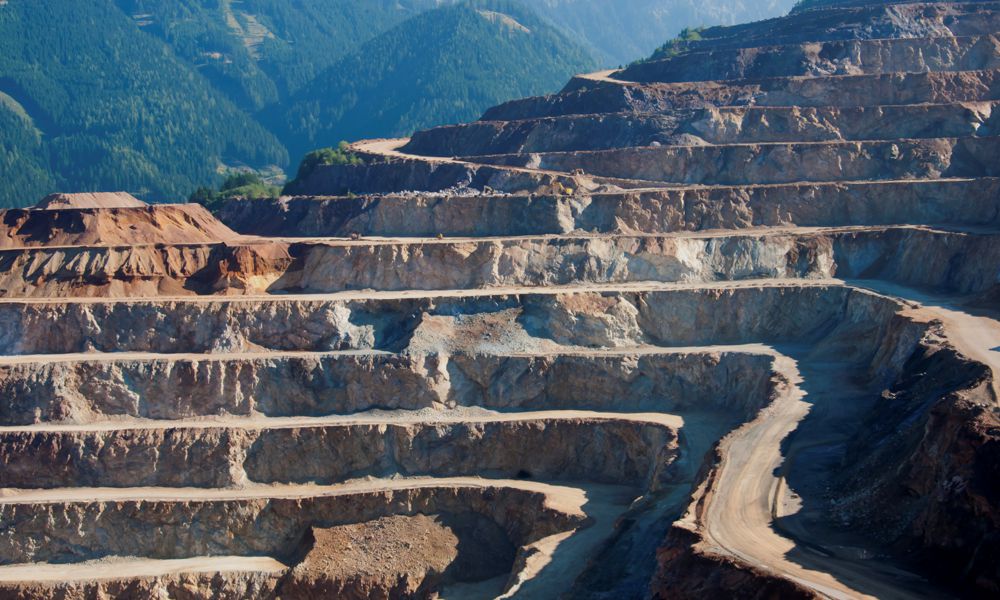In November last year I posted a blog introducing a new partnership OpenText had entered into with a UK-based provider of blockchain solutions, BlockEx. In the blog I highlighted how we would be looking to explore a joint solution relating to supply chain finance. Supply chain finance has been around for years, but the use of blockchain stands to transform its use across supply chains today. More on this in a future blog post.
Ever since I posted that blog there has been no end of use cases in the market for how blockchain can be used in the context of the supply chain. The main area of interest appears to be traceabilty of goods and provenence of goods as they move through the supply chain. Knowing the original source of raw materials is becoming even more important today, especially with the introduction of new compliance regulations and need for companies to be more responsive when government-led product recalls are announced.
Some of the supply chain related use cases for blockchain are shown below:
 Tracebility of goods moving across the supply chain is certainly one of the most important use cases for blockchain, especially when related to specific compliance regulations. One of the most significant regulations relates to conflict minerals traceability which was introduced in North America in 2014. I have followed this regulation since it was introduced.
Tracebility of goods moving across the supply chain is certainly one of the most important use cases for blockchain, especially when related to specific compliance regulations. One of the most significant regulations relates to conflict minerals traceability which was introduced in North America in 2014. I have followed this regulation since it was introduced.
The regulation was introduced to try and minimize the amount of conflict minerals entering global supply chains. The ‘Conflict Free Sourcing Initiative’ was defined in 2014 to help guide companies through this regulation but has been expanded since to include other minerals. The Responsible Minerals Initiative, allows companies to implement ways to keep track of the source of minerals as they enter the supply chain.
With regards to conflict minerals this specifically relates to the so called 3TG (Tin, Tungsten, Tantalum & Gold) minerals that are sourced from regions such as the Democratic Republic of Congo in Central Africa. Profits from the mining of 3TG minerals in this and surrounding regions are used to fund militia activities in the region. The aim of the conflict minerals regulation is to identify where these minerals are sourced from and from which mine. In North America every company filing to the SEC has to prove they are not using conflict minerals anywhere in their global supply chain.
From a reporting point of view, this is an almost impossible task, especially for example with a car manufacturer with over 20,000 trading partners around the world. Initially the CFSI issued a spreadsheet to help companies monitor the source of the minerals, ie the mine from which the minerals came from.
Emailing a spreadsheet to a large trading partner community and then having to track responses was potentially a very labor intensive activity. However some software vendors saw an opportunity to develop a web portal to help survey a trading partner community and record the source of these minerals.
In 2014, OpenText developed a solution offering around a collaboration platform – OpenText™ Active Community. OpenText replicated the CFSI spreadsheet as a web form in our portal that could then be sent out to a trading partner community for completion. However even with a web portal there is still a challenge to get every trading partner to engage and complete the web form.

Time has moved on and with all the noise over the past few months relating to blockchain use cases, it got me thinking whether blockchain could be used to trace the source of these minerals. In addition to archiving information inside a blockchain to document the source of the 3TG minerals, companies would also need the ability to physically track the 3TG minerals as they move across the supply chain. This is where the Internet of Things comes in.
We are currently experiencing a perfect storm from the point of view of new disruptive technologies entering the market, eg IoT and blockchain etc, which individually provide great capabilities but when combined together they bring a whole set of new capabilities. A blockchain can record any type of unstructured information, so in addition to traditional B2B transaction information relating to the order and delivery of the minerals to a manufacturing company, a blockchain could potentially archive IoT sensor information as well. So for example for each stage of the journey of the minerals through to finished goods delivered to a customer, the blockchain would record all B2B transaction information involved and IoT sensor information as well, eg GPS tracking, of the minerals and any downstream packaging of the minerals or goods. Consider this the ‘Blockchain of Things’.
I am currently developing some thought leadership content around this and also introducing two additional technologies which, when combined through this perfect storm, are likely to transform supply chain operations in the future. More on this concept in a future blog, but getting back to the Blockchain of Things in relation to conflict minerals traceability, let me take you through a process to show how blockchain and IoT when combined can provide the end-to-end traceability required to trace the source or minerals, 3TG or otherwise.
So the first stage of defining the blockchain relates to identifying the source of the 3TG minerals, namely the ID number of the mine and its location. Through the initial purchase order at the beginning of the supply chain, this information can be written to the blockchain. In the example below, OpenText™ Trading Grid is our global network where we process more then 24 billion B2B transactions each year. So the purchase order to source the minerals would be sent across our network and then onto the provider of the minerals. In addition I have also included BlockEx, to show how we could potentially append information to a blockchain.
The information from the B2B transaction relating to the location of the mine would be written to the blockchain. The minerals would then be transported to a local port by way of a 3PL carrier and their truck would be tracked using GPS technology. In reality you would also have location sensors on the container transporting the minerals and even on a shipping pallet itself and all this sensor information would be written to the blockchain as well.
For simplicity purposes I have only shown a few of the steps in the diagrams below, but hopefully you will understand the concept! As this is just an idea for a blockchain use case at the moment, I am not saying this is the correct way to achieve this but conceptually at least, if each step of the process is captured in the blockchain, then it could certainly work in my mind.
So the 3TG minerals are then loaded onto a ship which itself would be GPS tracked to its delivery destination, in this example to a freight terminal in Southampton, UK. A high level data model showing some of the key information appended to the block can be seen in the top right of the image below,

When the minerals pass through the port and customs agency they are transported by a 3PL carrier to the manufacturer of gold connectors based near Birmingham in the centre of the UK. The finished gold connectors are then shipped to a distribution center at Heathrow airport when an expedited cargo flight transports the gold connectors to the end customer in North America, a vehicle manufacturer. Each movement of the minerals and the finished connector products are appended to the blockchain, for example the manufacturing batch for each set of connectors manufactured is appended to the blockchain as well.

The gold connectors are delivered to the vehicle manufacturer and the Vehicle Identification Number (VIN) to which the batch of gold connectors have been fitted is also written to the blockchain. Finally, the new vehicles are delivered to the dealer network.

So the end result, and I understand this is heavily simplified, is that the blockchain contains an end-to-end record of the vehicles which were fitted with a specific batch of gold connectors sourced from a UK supplier who in turn used minerals mined from a specific mine location in Africa.

What I have described in this blog so far represents just one shipment of minerals but in reality there could be hundreds of shipments for this particular gold connector manufacturer. But of course there are many products that could use 3TG minerals, batteries, laptop PCs, mobile phones and of course jewellery. If you added a ‘3TG’ identifier to the blockchain as well then you could potentially search all blockchains with the 3TG identifier and use a machine learning environment to provide details of all shipments and more important all mines used for sourcing such minerals.
Now if companies could just provide a reference to a blockchain as part of their submission to the SEC each year then this could save many hours of manual processing and bring a much higher level of automation to the conflict minerals reporting process. The European Union has agreed to adopt a similar reporting process to the one implemented in North America, but this has not been deployed as yet. I would argue that blockchain could potentially underpin this particular reporting requirement.




